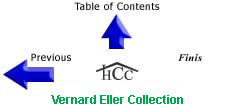An Appendix on the Translation
This translation must be categorized both as original and as derivative. It is original in that I worked directly from the original text--not the original manuscript, of course, but from a couple different editions of the text. However, the translation also is a derivative in that I make no claim of being a student of Middle English nor of being able to read it straight off. I have depended upon the translations and glossaries of other scholars, even while seldom following their readings.
My translation may be unique in its attempt to preserve as much as possible of the original poem in the process of making it accessible to modern readers. The result is a translation that is both more and less literal than others.
The tendency is for a translator to latch on to one aspect or feature of the poem, preserve that in all possible exactitude, and let happen what may to the other features. Thus, there are prose translations which seek accurately to reproduce the poet's thought in modern English--without regard to the meter, rhyme, alliteration, or link words. There is, on the other hand, at lest one modern translation (paraphrase) which gets the rhyme and meter all correct but at the cost of the poet's own words, his alliteration, and his linkage. My method, on the contrary, has been that of continual compromise trading off one feature against another to the end of preserving as much of all of them as is possible.
I have used more of the poet's exact words than has any other translation I've seen. Many of his words have changed enough over the centuries that they no longer express to us his meaning as well as more modern words would do. Nonetheless, whenever I felt the reader could follow the general sense and make correction for the differences of overtone, I chose to let the original word stand.
At great pains (and with residual awkwardness) I have completely reproduced the poet's original pattern of catch lines with their link words. I think he considered this an important feature of his work.
Likewise, I think I have preserved almost as much alliteration as is in the original--and in the places where the poet had it. Many times my word is not all that close in meaning to his; but if I could retain his general sense and still alliterate, I did.
Within these parameters, then, I tried to preserve as much of the original rhyme and meter as possible. That preservation is by no means perfect; yet enough has been retained to keep the reader aware that rhyme and meter are (or were) present.
While doing the translation, I became very impressed with the author's way with words, his ability as a poet. When writing the commentary, I was struck in a quite different way--by his insight as a Christian theologian and teacher. This writer--of whom we know not so much as his name--was great either way. My prayer is that the effort represented by this book might enable him to speak his poetic pearl of Christian counsel for your growth and edification.

|
Copyright (c) 1983 |
